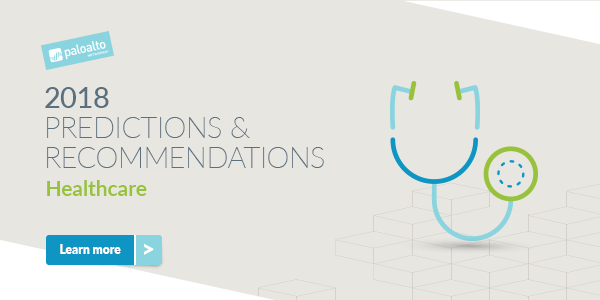This post is part of an ongoing blog series examining predictions and recommendations for cybersecurity in 2018.
Machine learning is a buzz topic of conversation in many industries, but is it over-hyped or a real game changer? In the healthcare and cybersecurity industries, at least, I’m leaning toward game changer, and here’s why.
There are endless applications of machine learning within healthcare that can improve patient outcomes and patient care. The most obvious one is to use machine learning algorithms to improve diagnoses and care plans – far more accurately than a human doctor, and with much better results. We’re already beginning to see headlines: Stanford has developed a deep learning algorithm to identify skin cancer; Google used machine learning to create a tool that detects breast cancer better than human pathologists; and a JAMA article described the success of using machine learning to detect diabetic retinopathy in retinal photographs. We’re only witnessing the beginning of a long line of breakthroughs that will change the way people think about machine learning, from interesting research into a new standard of care for patients.
Cybersecurity, like healthcare, has some very compelling applications for machine learning as well, many of them equally game-changing. Ten years ago, organizations could protect themselves from cyberattacks with signature-based security products at the endpoint, on the network and in the cloud. But it didn’t take long for cyberattackers to catch on to the fact that they could beat signature-based security by automating the creation of unique malware, and that shift marked the end of pure signature-based malware detection.
Is machine learning the silver bullet for cybersecurity? Maybe that’s a little dramatic, but machine learning definitely will have a growing impact on the effectiveness of cyberattack prevention. Machine learning is one of the methods used by our Traps advanced endpoint protection to identify malicious files with a very high degree of accuracy. On the network, LightCyber behavioral analytics uses machine learning to “learn” the expected behavior of users and devices and then detect behavioral anomalies indicative of attack.
Healthcare and cybersecurity both generate a massive amount of data, and machine learning offers a standardized and proven approach to drawing meaningful conclusions from huge and seemingly unrelated data sets. The healthcare industry, in particular, has been impacted greatly by targeted and non-targeted cyberattacks in the past year and, hence, is very well-positioned to benefit from machine learning advances on both the patient-facing and cybersecurity fronts.
As we head into 2018, CISOs of healthcare organizations should start planning to adopt machine learning in their cybersecurity programs. Applications for machine learning will expand over time, but it’s already proven to be effective at identifying advanced malware in healthcare IT environments.
